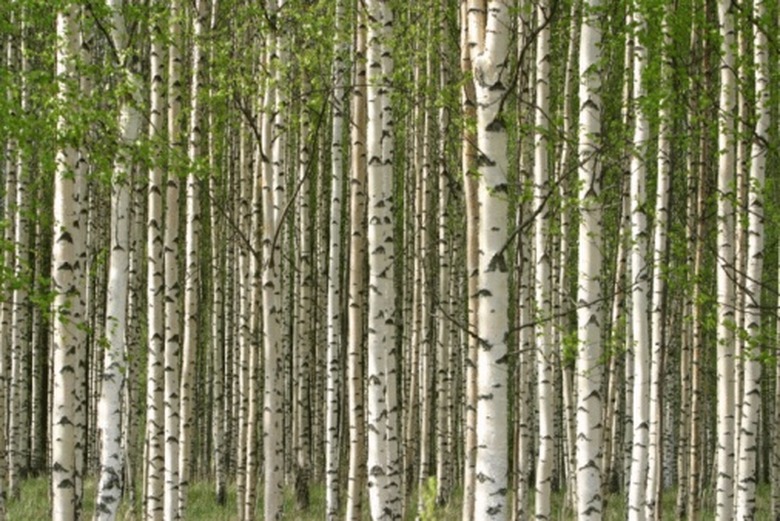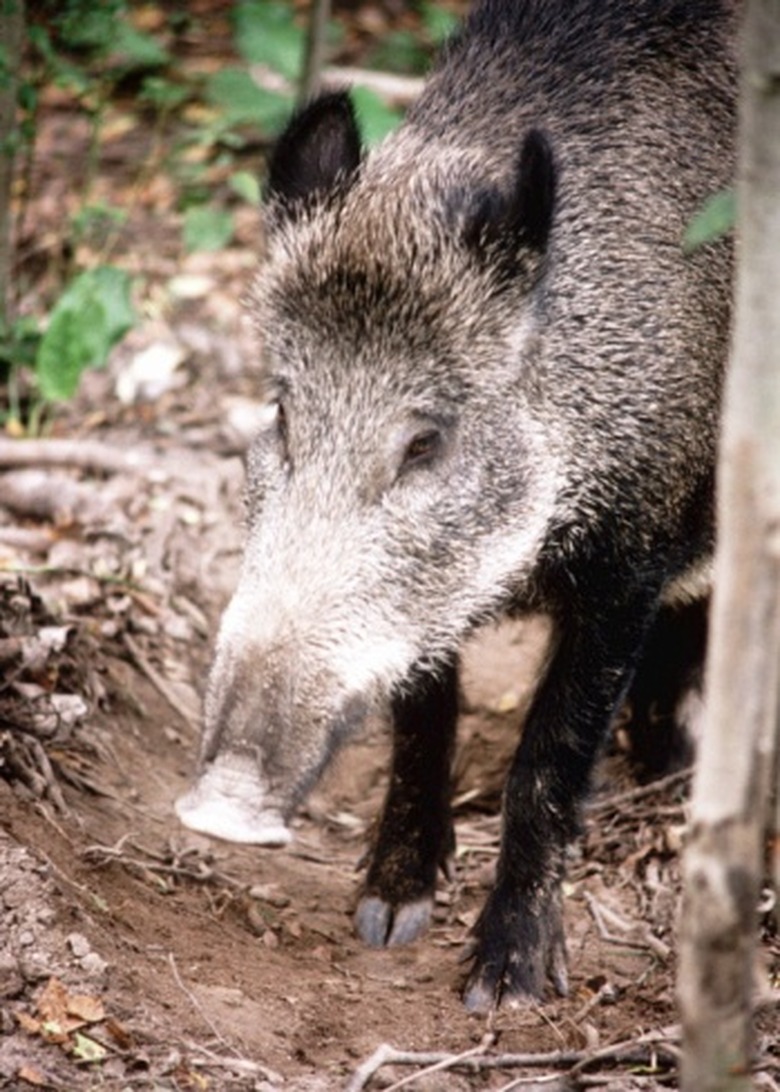Common Russian Plants & Animals
Russia forms part of the habitat known as the taiga biome. The world's most extensive habitat, the taiga stretches from North America through Europe, Russia and into Asia. It features coniferous forests, mountains and tundra. The climate is cool, with cold winters. Consequently, the taiga has fewer species than warmer regions. Many Russian animals migrate or hibernate. Similar species are found throughout the taiga – North America's caribou and Russia's reindeer are the same species.
Russia's Native Trees
Russia's Native Trees
Russia's trees fall into two main groups: coniferous evergreens and deciduous birches, willows, poplars and alders. Larch and fir are common, as are pines, spruces and cedars. These grow close together and their shape sheds snow. Their waxy needles are resistant to cold and to water loss in drying winds. Larches are particularly resistant to permafrost. These dominate in Siberia.
Herbaceous Plants in Russia
Herbaceous Plants in Russia
The northern tundra has few plants beyond mosses, lichens and cotton grass. Grasslands extend across the southern Urals, where flowering plants like purple loosestrife, larkspur, baby's breath, bergenia and oriental poppies are found. Plants in Russia also include native Russian tulips, which are the ancestors of cultivated tulips. Bright blue scilla (squills) also grow wild there.
Bird Life
Bird Life
The most common birds are seed eaters, particularly birds that eat conifer seeds. These include goldfinches, chaffinches, siskins and waxwings. Starlings are also common. They supplement a seed-rich diet with fruit. All these types of birds form flocks in the colder months. Many flocks migrate to Western Europe to over-winter. Birds of prey, including owls, are also features of the taiga. They feed on the small mammals of the tundra and forest.
Cloven Hoofed Animals
Cloven Hoofed Animals
Reindeer have long been semi-domesticated throughout the northern Eurasian taiga. They are herded for their meat, hides and for transport. Roe deer – which are very small deer – are common in western Russia. Their upright antlers have no more than three prongs. Unlike most deer, roes are solitary animals. Wild boar live in scrub and forests from Southern Russia through Siberia. Their diet includes seeds, roots, eggs and even dead animals. Living in groups, they sleep in close body contact and enjoy regular wallowing.
Small Herbivores
Small Herbivores
Siberian chipmunks are common in larch forests, eating seeds and insects. Red squirrels similarly thrive on conifer seeds. Eurasian flying squirrels live along streams in dense forests in Northeastern Russia. They feed at night on buds of birch, alder and conifers. Beavers also frequent Russia's forest streams, feeding on trees, roots and water plants. Lemming populations explode every few years on tundra and the grassland. Norway lemmings eat moss and grass; Arctic lemmings prefer the buds and bark of willow trees.
Common Carnivores
Common Carnivores
Badgers are found wherever forest floors are soft enough for burrowing. Sables and martens – relatives of ferrets – prey on mice and birds. Sables also eat many conifer seeds, sometimes to the detriment of seed-eating birds and mammals. Martens are climbers, frequently seen in trees. Animals that live in Siberia include Wolverines, a related species to Martens. Living on eggs, berries and mammals, wolverines will even attack deer. Arctic foxes are found in the northern tundra. Feeding on lemmings and ground-nesting birds, they migrate into forests when food grows scarce. Wolves remain common in northern Russia. They sometimes cause problems in harsh winters, preying on farm animals or raiding human food stocks.
Cite This Article
MLA
Wedgwood, Tamasin. "Common Russian Plants & Animals" sciencing.com, https://www.sciencing.com/common-russian-plants-animals-8253011/. 22 November 2019.
APA
Wedgwood, Tamasin. (2019, November 22). Common Russian Plants & Animals. sciencing.com. Retrieved from https://www.sciencing.com/common-russian-plants-animals-8253011/
Chicago
Wedgwood, Tamasin. Common Russian Plants & Animals last modified March 24, 2022. https://www.sciencing.com/common-russian-plants-animals-8253011/





